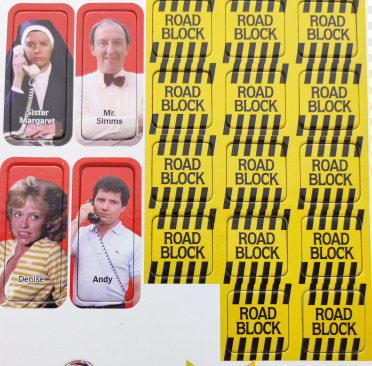The single-layer punchboard stands out as a significant innovation in board game component design, introducing a streamlined and efficient approach to game pieces.
this design optimizes both manufacturing processes and gameplay experiences. Let's explore the key advantages and features of the single-layer punchboard.

Efficiency in production is a notable advantage of the single-layer punchboard. Unlike traditional punchboards with multiple layers, this design simplifies the manufacturing process, reducing material usage
and potentially lowering production costs. This efficiency benefits both game manufacturers and consumers, contributing to a more cost-effective and sustainable production model.
The streamlined game setup is another noteworthy feature. With a single-layer punchboard, players can easily punch out game components without dealing with multiple layers, leading to a quicker and
more straightforward setup. This streamlined process is particularly beneficial for players who value a hassle-free and time-efficient start to their gaming sessions.
Reduced storage space is an additional advantage offered by the single-layer punchboard. Game components are typically more compact, leading to more efficient packaging and shipping. Gamers benefit
from having games that take up less space on their shelves, making it easier to organize and store their board game collection.
Enhanced component visibility during gameplay is facilitated by the single-layer design. With fewer layers to navigate, players can easily identify and access their game pieces. This contributes to a smoother
gaming experience, reducing the time spent searching for and handling components—particularly valuable in games where quick decision-making and efficient gameplay are crucial.
In the context of growing environmental concerns, the single-layer punchboard aligns with sustainable practices. The reduction in material usage contributes to a more eco-friendly approach to board game
production. This aligns with the broader trend in the gaming industry towards environmentally conscious practices, appealing to consumers who prioritize sustainability.
The single-layer punchboard provides designers with greater versatility in component design. Without the constraints of multiple layers, game designers have more flexibility in creating unique and intricate
components. This creative freedom can lead to more innovative and visually appealing game pieces, enhancing the overall aesthetic and thematic elements of board games.
In conclusion, the single-layer punchboard represents a significant advancement in board game component design. Its efficient production, streamlined setup, reduced storage space requirements,
enhanced component visibility, environmental sustainability, and versatility in design collectively contribute to a more enjoyable and practical gaming experience. As the gaming industry continues to evolve,
the single-layer punchboard stands as a testament to innovation in board game component design, meeting the preferences of both game designers and players alike.